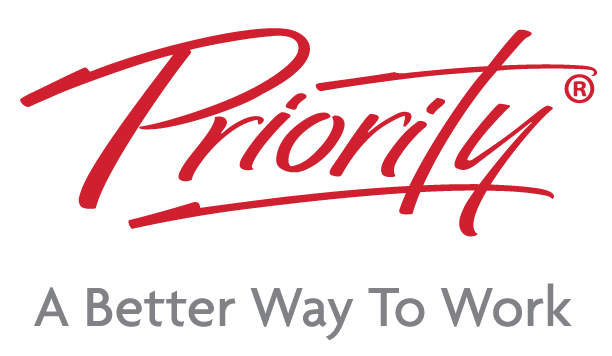Just got promoted and now everyone expects you to “be a leader,” but what does that actually mean?
Whether you’ve been a leader for six days or six years, you already have a leadership strategy, even if you don’t know what to call it yet. You might have a strict policy of ‘delegate, delegate, delegate’, or have a passion for creating collaborative spaces.
Determining your current strategy can not only help you lead more effectively but also allow you to identify the skills that can take your leadership to the next level.
Take the 10-minute assessment below today and lead with more clarity and confidence tomorrow.
Discover Your Leadership Strategy (Take the Assessment)
Answer each of the following questions honestly, taking note of which letter you answer with the most, as it corresponds to your leadership style, which we’ll explain more about below.
1. A member of your team misses a critical deadline. You:
A – Sit down with them to understand what happened and offer support
B – Set up a performance plan with specific metrics and scheduled check-ins
C – Ask the team how they think missed deadlines should be handled
D – Give the team member direct feedback about expectations
2. An urgent client matter requires a response within the hour. You:
A – Gather your team to handle the situation as a shared challenge
B – Quickly assign tasks and establish what’s expected
C – Bring the team together to discuss before deciding how to proceed
D – Decide how to respond and instruct the team to action the necessary steps
3. Some team members are opposed to a new process that’s required of them. You:
A – Share your vision for why the change is necessary
B – Reinforce what’s required by outlining expectations
C – Gather feedback from your team and adjust as needed
D – Call a meeting to explain that the new process is mandatory
4. You’ve noticed the work standards of a valued team member are beginning to slide. You:
A – Meet with them, discuss their goals and inspire purpose
B – Set new performance targets with clear metrics and tighten monitoring
C – Hold a team session for ideas on improving morale
D – Tell them exactly what needs to improve and assign tasks to ensure standards are met
5. Your project is behind schedule, and you’re at risk of missing a deadline. You:
A – Rally and refocus the team
B – Introduce stricter timelines and progress check-ins
C – Call for a collaborative planning session to manage challenges
D – Take control, rejig the plan and reassign tasks where necessary
6. There is a conflict between 2 members of your team. You:
A – Speak to them individually, then together, to work through issues
B – Outline expected behaviours and consequences if the conflict continues
C – Mediate a conversation to find a solution
D – Instruct them to resolve it and tell them how to proceed
7. A new initiative requires an innovative approach from the team. You:
A – Inspire the team with a vision and encourage experimentation
B – Set out clear criteria for what must be achieved
C – Run a brainstorming session with the entire team
D – Decide on an approach yourself and instruct the team on how to follow it
8. A new employee makes an obvious mistake in front of clients. You:
A – Use it as a coaching moment
B – Set expectations to avoid it happening again
C – Ask the team how mistakes should be handled going forward
D – Step in immediately, correct them, and clearly state the correct procedure
9. Your team seems to be lacking motivation. You:
A – Remind them of the purpose of the work
B – Define goals and implement performance rewards
C – Involve the team in designing new team rituals
D – Implement a new process to improve discipline
10. You need to decide on next quarter’s priorities. You:
A – Share a strategy and empower the team to help shape it
B – Set priorities based strictly on measurable performance gaps
C – Gather input from the team to make a decision together
D – Take control of the decision-making yourself
11. Your boss questions the effectiveness of your team. You:
A – Highlight your team’s strengths and plans to inspire confidence
B – Provide detailed performance data that shows otherwise
C – Take it to the team for ideas on how to improve
D – Commit to tightening control and making improvements
12. Your company is going through a period of uncertainty. You:
A – Clearly communicate with your team to give them hope and clarity
B – Outline rules, roles, and what isn’t changing
C – Facilitate meetings for questions and shared decision-making
D – Make firm decisions quickly to project authority
How did you score?
Mostly A – You’re a transformational leader
You motivate through vision, inspiration and personal development.
Mostly B – You’re a transactional leader
You’re all about data, operating with clear expectations and KPIs to maintain stability and performance.
Mostly C – You’re a democratic leader
You believe in collaboration, a shared vision, and building trust through inclusion.
Mostly D – You’re an autocratic leader
Your authoritarian leadership sees you take charge decisively and put a lot of value on efficiency.
A mix – Most people use a mix of 2-3 strategies to get the most out of their teams. Your secondary leadership style matters too, so read on to find out more.
The 7 Types of Leadership Strategies Explained
Transformational leadership style – “The Visionary”
 If you love inspiring your team and encouraging growth, you fall into a transformational leadership style. Visionary leaders motivate through personal connection and enthusiasm, focusing on long-term success and innovative solutions.
If you love inspiring your team and encouraging growth, you fall into a transformational leadership style. Visionary leaders motivate through personal connection and enthusiasm, focusing on long-term success and innovative solutions.
This is the most effective leadership style for organisations undergoing change, or when creativity is a key requirement of the job. However, in a highly routine work environment, this is one leadership style that may not see the best results.
You might be this type if…
- You naturally motivate others by sharing big-picture goals.
- You focus more on growth and development than on KPIs.
- You enjoy challenging your team to think creatively and push boundaries.
Transactional leadership style – “The Goal Setter”
A leadership style based on performance and structure, transactional leaders focus on rules and consistency. If valuing KPIs and timelines are key characteristics of your leadership style, you’re probably the type of leader who feels comfortable using rewards and consequences to manage your team.
Because transactional leadership establishes roles and expectations, it’s particularly effective when tasks are routine and regulated, but it may not work so well when creativity or innovation are required.
You might be this type if…
- You thrive on clearly defined expectations, KPIs and deadlines.
- You rely on structured systems to keep performance on track.
- You prefer predictable processes over experimentation.
Democratic leadership style – “The Collaborator”
If you value collaboration and building relationships, yours is a democratic leadership style. If you engage employees by including them in the decision-making process, this helps to build trust and strong relationships.
By relying on the experience and diversity of your team members, you can come up with innovative ways of working. However, if you’re managing an inexperienced team or decisions must be made quickly, you may struggle to achieve goals if you always seek feedback before acting.
You might be this type if…
- You consult your team before making big decisions.
- You enjoy cultivating spaces where everyone feels comfortable contributing ideas.
Autocratic leadership style – “The Decision Maker”
If seeking team input isn’t your style and you prefer taking control, you’re an autocratic leader. The core values of this style include quick decision-making and strong direction. It’s a true top-down type of leadership.
This style can face resistance if overused or when a team expects autonomy. However, by providing clear direction and tight control, it can be an effective leadership style for inexperienced teams or in situations that require urgent attention.
You might be this type if…
- You prefer to make decisions quickly without group discussion.
- You feel responsible for maintaining control and direction.
You thrive in high-pressure situations where quick action is required.
Laissez-faire leadership style – “The Delegator”
If you lean toward a democratic leadership style but expect team members to work autonomously, you follow a delegative leadership style. This hands-off approach shows that you trust your team to make decisions without micromanaging them.
While this works well when employee motivation is high and creativity is required, delegative leaders should use caution if there is no system for tracking progress or if they are managing junior employees.
You might be this type if…
- You are happy to give your team autonomy as long as the work gets done.
- You trust your team to complete work to a high standard.
- You’re more comfortable guiding from a distance than closely monitoring.
Servant leadership style – “The Coach”
This leadership approach puts people first. If you believe in empowering your team and prioritising their personal growth, you’re a type of transformational leader called a servant leader.
 Because your decisions are guided by ethics, empathy and long-term development, this leadership style needs to be supported by organisational culture. Coaching your team is admirable, but strong boundaries are also a must.
Because your decisions are guided by ethics, empathy and long-term development, this leadership style needs to be supported by organisational culture. Coaching your team is admirable, but strong boundaries are also a must.
You might be this type if…
- You have a people-first focus, before considering processes or outcomes.
- You often ask, “How can I help you succeed?”
- You’re motivated by seeing others grow.
Bureaucratic leadership style – “The Rule Follower”
If you believe consistency is key to fairness, this transactional leadership offshoot is your style. You stick closely to rules and policies, enforcing structure and expecting compliance.
If your work environment has low tolerance for risk, this is a good leadership style to adopt because it prioritises safety, accuracy and compliance.
You might be this type if…
- You rely on policies, procedures and established systems to make decisions.
- You value consistency and fairness over flexibility.
What If You’re a Mix? Understanding Your Leadership Blend
Understanding and drawing upon the characteristics of other leadership styles is an effective way to operate. This is because just as people are multi-layered, so are the situations in which you’ll find yourself as a leader. A 70/30 blend, where you lead primarily from your natural style but draw on a secondary style, can provide consistency and adaptability.
With this approach, you can build trust and stability with your primary leadership style, but you can also be flexible as required. For example, bureaucratic leaders can be more transformational when motivation dips, or autocratic leaders can be more democratic when situations allow for more time for team discussions.
Developing Your Leadership Strategy: 30-Day Action Plan
Week 1: Observe your own behaviour and take note of your actions
Use a journal to track what situations have arisen, what actions you took and how you’d classify these actions.
Week 2: Get Feedback
Get out of your comfort zone and ask your team about your leadership. Give them specific questions to answer, such as ‘What could I do differently to make you more effective?’. Don’t defend or explain your actions, just listen and take the feedback on board.
Week 3: Practice Your Weak Area
Use the feedback to identify your blind spots, and try one specific task to practice a different approach. Make it a low-stakes situation and make sure you reflect on what happened.
Week 4: Refine Your Approach
Based on your diary and feedback, what’s your primary strategy? What different leadership styles do you relate to? When do you need to flex between your 2 main styles? Use this information to write a leadership philosophy of 1-2 sentences long.
5 Signs You’re Using the Wrong Strategy Right Now
 If you’re noticing any of these signs, it might be time to adapt your approach.
If you’re noticing any of these signs, it might be time to adapt your approach.
Sign #1: Your team keeps asking for clarity
Are you too hands-off when your team needs direction? A transformational or servant leadership style may help.
Sign #2: People stop bringing you ideas
Are you too autocratic? Create a more open and collaborative environment.
Sign #3: Decisions take forever
Collaboration is great, but some decisions may benefit from autocratic leadership skills.
Sign #4: You’re exhausted, but nothing’s getting done
You may be using the wrong strategy for your team’s maturity level. A coaching style might net better results.
Sign #5: High performers are leaving
Do they have enough autonomy? Do they feel supported? A laissez-faire or servant leadership style may help improve employee engagement and satisfaction.
Choosing the Right Leadership Strategy for Your Situation
Your leadership strategy should depend on these 3 factors.
- Your team’s experience level. While new teams will require more direction, more experienced staff may thrive with a hands-off approach that shows trust and gives them the freedom to be creative.
- The business situation. What state is the business in? A changing environment can benefit from a visionary approach, while crises will require decisive action.
- Your natural strengths. Start with what feels authentic and develop flexibility from there.
Here are some practical examples:
Crisis? → Be Decisive
No crisis but inexperienced team? → Be Systematic or Directive
Experienced team with complex problem? → Be Collaborative
Experienced team with clear goals? → Be Hands-Off
Major change happening? → Be Visionary
Taking Your Leadership Strategy Further
Now that you’ve identified the approach you are naturally drawn to when it comes to managing others, you can further develop your skills and accelerate success with a leadership training course with Priority Management, your trusted leaders in workspace solutions.
